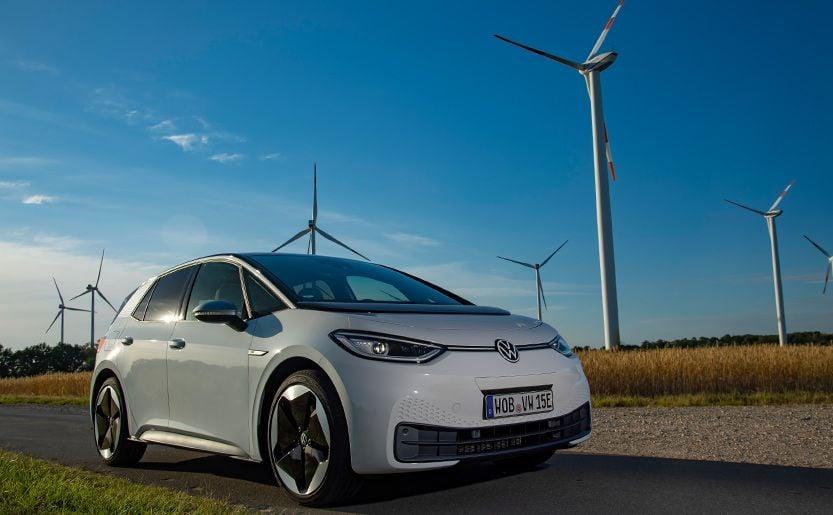As an experienced expert in the field of intelligent charging and energy solutions, The Mobility House has set itself the goal of taking a closer look at widespread fairy tales surrounding e-mobility and questioning them. Fairy tale number six talks about the rumored dangers of driving electric.
Once upon a time…it was dangerous to drive an electric vehicle
If you follow the media coverage, you would think that electric cars go up in flames more often than cars fueled by gasoline or diesel. But this is not true. ADAC, Dekra and representatives of the fire brigade all agree: It is extremely rare for electric cars to catch fire in accidents, as the manufacturers provide elaborate protection for the battery packs installed in the underbody of the car.
Although the data situation is still too scarce to be able to give a definite answer whether electric cars or combustion engines catch fire more often. However, there is a trend: experts suspect that electric cars tend to burn less often than vehicles with combustion engines. And the latter catch fire much more often than one might think: according to the German Insurance Association (GDV), 40,000 vehicle fires occur in Germany every year, mostly minor braising damage due to short circuits. Of these, 15,000 cases are actual fires – a good 40 a day.
In addition, all vehicles have to pass the same safety test and are put through their paces before they are allowed on the road. In the case of an electric car, all components must be designed to be "intrinsically safe", according to the ADAC. In concrete terms, this means that as soon as a defect occurs or an accident happens, the flow of electricity to the battery must be interrupted automatically. The battery is disconnected from other high-voltage cables and components within milliseconds so that no voltage is applied. Therefore, passengers do not have to be afraid of an electric shock after an accident, because there is normally no electrical hazard.
This is also shown in a crash test comparison by the ADAC: neither did the battery ignite in the event of an accident, nor was there any deformation of the battery pack– so there was no risk of fire and safety was the same as with a conventional car. Increased requirements or precautions are therefore not necessary. A special arrangement or dimensioning of parking spaces for electric cars is not required from a fire safety point of view. In case of doubt, though, an external fire protection officer can always be called in to assess the situation individually on site.
Nevertheless, there are a few points to consider when it comes to parking spaces and charging stations: Charging stations are not permitted in certain commercial and industrial areas for fire protection reasons. These include, for example, fire-hazardous operating sites according to DIN VDE 0100-420 or areas with a risk of explosion or explosive substances. In addition, no highly flammable materials may be stored in the immediate vicinity of the charging station. However, the blocking of entire underground car parks for electric cars is unfounded. On the one hand, underground garages are sufficiently secured by fire protection targets, on the other hand, the specific fire load of electric vehicles is even lower than that of conventional drives due to the lack of fuel on board.
If a fire should break out nevertheless, there are a variety of measures that can be taken. In addition to extinguishing systems, there are also measuring devices that detect escaping gases or gas mixtures even before a fire starts. This way, the extinguishing systems are already activated before a major fire with damage actually occurs.
AVAS is mandatory
Another potential danger, which electric cars are accused of: their lack of noise. Only a low humming noise announces the arrival of an electric car, in contrast to the internal combustion model. Particularly when starting up at traffic lights and intersections or at low speed in calm residential areas, it becomes clear that electric cars can easily be overlooked or "overheard". This is particularly dangerous for hearing impaired people or people with poor eyesight, who often rely on their hearing in traffic.
Regulation 540/2014 of the European Parliament and Council has remedied this situation. Since July 1, 2019, new types of hybrid electric cars as well as purely electric vehicles and even fuel cell cars must have an acoustic vehicle alerting system (AVAS) installed to protect pedestrians. From July 1, 2021, this will apply not only to new types of vehicles, but to all new vehicles with electric and hybrid drive systems. The vehicles must emit a warning sound up to a speed of 20 km/h. Above 20 km/h, most noise is generally not caused by the engine but by the rolling noise of the tyres. Here, there are no differences between an electric car and a conventional vehicle.



